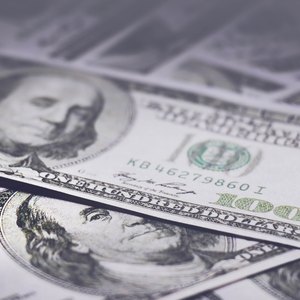
Keynesian and monetarist theories are two economic theories offering different opinions on what drives the economy and how the government should fight recessions. Keynesian economics generally holds that spending pushes the growth or shrinking of the economy, while monetarist thinkers say the amount of money in circulation is of greatest importance.
Tips
Keynesian and monetarist theories offer different thoughts on what drives economic growth and how to fight recessions. Keynesian economists generally say that spending is the key to the economy, while monetarists say the amount of money in circulation is the greatest determining factor.
Keynesian Theory
Keynesian theory is named after the 20th century British economist John Maynard Keynes. It generally says that economic growth or stagnation is driven primarily by "aggregate demand," essentially meaning the total amount of spending in the economy. When spending goes down, production also slows and people lose their jobs, and when spending goes up, production and employment go up as well.
Keynesian economists generally say that as a result, governments should try to balance the cyclical nature of the economy by spending more during economic downturns and less during periods of prosperity. That way, when the economy isn't doing as well, increased government spending can boost demand and get people back to work, and when it's booming, decreased government spending can avoid causing inflation.
The theory is often associated with public works projects such as President Franklin Roosevelt's New Deal or, more recently, the American Recovery and Reinvestment Act passed in 2009, intended to boost spending to help counter the recession that year.
Monetarist Theory
Monetarist theory holds that it's the supply of money, rather than total spending, that drives the economy. When more money is in circulation, more business transactions are enabled and more money gets spent, stimulating the economy, according to proponents of the theory. The most famous proponent of monetarist theory was the late Nobel laureate economist Milton Friedman, who famously laid the blame for the Great Depression with the Federal Reserve, which controls the U.S. money supply.
Some monetarists believe that the Federal Reserve and other central banks should simply let the money supply grow at the rate the gross domestic product, a measure of total economic activity, is expected to grow, essentially taking a hands off approach.
In some cases, monetarists also call for more active interventions. In the late 1970s and 1980s, the Federal Reserve deliberately shrank the money supply, raising interest rates to tame inflation. And during the recession that began in 2008, the Federal Reserve lowered interest rates to near zero and bought securities and other assets from banks as part of what was called the Troubled Asset Relief Program in order to get more money into circulation.
References
- IMF: What Is Monetarism?
- Keynesian vs Classical models and policies - Economics Help
- IMF: What is Keynesian Economics?
- The Motley Fool: What Are the Differences Between Monetarist Theory and Keynesian Theory of Money?
- TARP Programs
- International Monetary Fund. "What Is Keynesian Economics?" Accessed Mar. 21, 2020.
- International Monetary Fund. "What Is Monetarism?" Accessed Mar. 21, 2020.
- U.S. Department of Transportation. "When Did the Federal Government Begin Collecting the Gas Tax?" Accessed Mar. 21, 2020.
- Board of Governors of the Federal Reserve System. "FEDS Notes: Inflation Expectations in the Recovery From the Great Depression." Accessed Mar. 21, 2020.
- The White House of President Barack Obama. "The Financial Crisis: Five Years Later." Accessed Mar. 21, 2020.
Writer Bio
Steven Melendez is an independent journalist with a background in technology and business. He has written for a variety of business publications including Fast Company, the Wall Street Journal, Innovation Leader and Ad Age. He was awarded the Knight Foundation scholarship to Northwestern University's Medill School of Journalism.
